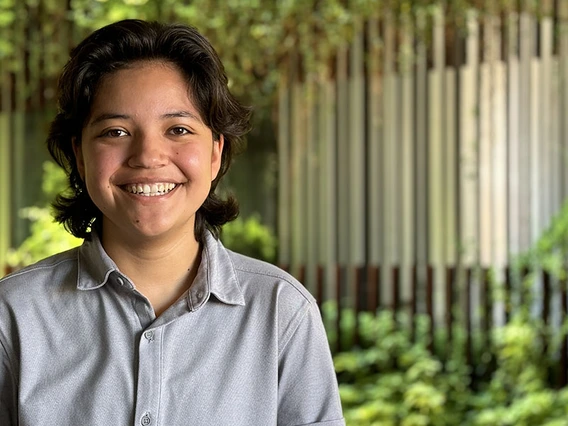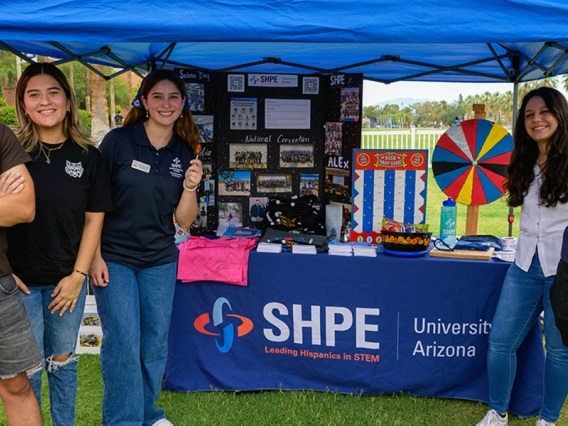University welcomes record number of in-state students as part of largest, most diverse class in history
Engineering enrollment and Arizona impact continue to grow in 2024.

Chemical and Environmental Engineering Department Chair Kim Ogden (standing, left) and CHEE Academic Advisor Lori Huggins welcome new students at the 2024 Dean’s Barbecue.
The University of Arizona welcomed its largest and most diverse class in university history. More than 9,300 first-year students – including a record 4,900 Arizona residents – started their Wildcat journeys in August 2024. In the College of Engineering, 65% of first-year students are from Arizona, an increase from last year’s 61%.
This year's university-wide first-year student enrollment tops last year's recording-setting class and is nearly 5% higher than it was in 2022 and 10% higher than it was in 2021. Engineering remains among the most popular majors, and enrollment maintained all-time high numbers with 767 new students.
"The University of Arizona offers so much opportunity for its students," said Kasey Urquídez, vice president of enrollment management and dean of undergraduate admissions. "We have students who want to do research and experience academics outside the classroom – and you can do that as soon as you arrive. There are so many ways to get involved and really find your niche with our array of offerings."
This year's first-year students are also part of the most diverse class in university history: university-wide, 50% self-identify as ethnicities other than white, whereas 53% of engineering students identify as such – up from 45% last year.
College leaders create a welcoming environment for all potential students by supporting clubs dedicated to cultural communities, hiring faculty members who represent the student population, and administering programs that help students succeed. The college recently joined the National Science Foundation’s Western regional hub for the Engineering PLUS alliance to enrich these efforts.
Increasing the population of engineering students who identify as women remains a major priority. This year, 29% of the incoming class are women. This exceeds the national average of 24% for female engineering bachelor’s degree graduates, as recorded in a 2023 NSF report.
Bound for a purposeful career
First-year student RueShandiin Jim plans to earn an environmental engineering degree to serve her community of Aneth/Montezuma Creek, Utah, in the Navajo Nation.
“In the Navajo culture, we center all things – such as our clan system, stories and prayers – around life and the land,” she said. “So, being highly connected with the environment, I fear that the area I’ve grown up in needs assistance.”
With many oil rigs and petroleum fields in her community, the quality of air, water and vegetation is growing worse by the year, Jim said.
I thought it was normal for many years until I heard the stories of past farms that grew corn, squash and melons," she said.
Jim appreciates the many opportunities available to U of A students, such as clubs and internships. The most important factor in her college choice was the university’s collaboration with Arizona’s tribal communities, she said.
“Not many institutions collaborate with Indigenous communities the way the U of A does.”



